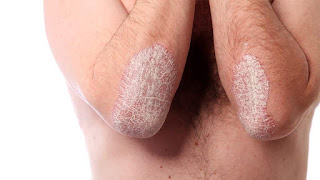Facts and Myths About Vitiligo / Leucoderma
 |
| Vitiligo Treatment in Mumbai - Mulekar Clinic |
1. Is Vitiligo and Leucoderma same?
Vitiligo is an autoimmune condition which appears without any pre-existing conditions. While on the other hand, Leukoderma appears after some pre-existing condition such as post burn, post-DLE etc. Leukoderma may not be associated with autoimmunity, however, in India, Vitiligo and Leucoderma are considered the same.
2. Does consumption of certain foods cause vitiligo?
No is the answer to this question. Over many years, a lot of people have believed that eating white foods or sour foods like citrus; or by drinking milk shortly after eating fish causes vitiligo. However, there is no scientific evidence to prove the above theory. Moreover, there is no evidence to prove that diet has an impact on the severity of the condition. Vitiligo is known to occur with the same incidence across all populations with different dietary habits.
It has been found that oral supplementation with antioxidants containing alpha-lipoic acid and Vitamin B12 before and during NB-UVB treatment significantly improves the clinical effectiveness of phototherapy (Kaimal & Thappa, 2010). However, more studies from different centers will help to establish or discard this hypothesis.
3. Is Vitiligo contagious
No, it is not contagious. It does not spread by touch, sharing personal items, saliva etc. it is not related to disorders such as leprosy, albinism or skin cancer.
4. Is Vitiligo 100% Curable?
Can’t say. It is an unpredictable condition. The treatment is difficult, slow and not all patients respond similarly. There are different types of vitiligo with varying percent of curability. The segmental type, usually responds to surgical treatment and can be considered as completely cured, though more long-term studies are needed to prove this. Generalized is expected to recur and has less chance (more chances of not getting cured). Hence most of the times the answer a patient will get is No.
5. Is there any laboratory test to detect Vitiligo?
There is no laboratory test (blood, etc) to predict the onset or diagnosis of vitiligo. The best way to detect vitiligo is clinical examination with an instrument ‘wood’s lamp’.
6. Is Vitiligo related to Albinism or Leprosy?
No, people mistake Albinism and Leprosy to be in the same category. However, these are completely different conditions. In Albinism, an individual is born with little or no melanin at all, wherein in the entire body is encompassed along with hair also being white. Whereas Leprosy is caused by bacterial infection and along with multiple other symptoms, skin lightening may occur. Vitiligo as a condition occurs after birth (no period specified) and is not any sort of infection. There are multiple theories in place, explaining the cause.
7. Safety of Phototherapy (NB-UVB) treatment
Since the late 1990’s, narrowband ultraviolet B (NB-UVB) has become the gold standard in the medical management of vitiligo. Since the development of skin cancer in vitiligo patients appears to be rare, the long-term risk of carcinogenesis with NB-UVB use in vitiligo patients is comparatively less compared to other indications (Man et al. 2005; Seo & Kim, 2001). In white patients, up to 200 sessions are considered safe. In brown skin population/south Asian population, no similar data exists.
The clinical experience with NB-UVB is limited and needs more work. There is no established safe limit for its maximum duration of use in Vitiligo. Hence there is a recommendation that responsive patients can be given the treatment for up to a maximum of 12 months followed by 3 months rest and then continue for another 12 months. In children, maximum duration is recommended for 12 months.
Overall, NB-UVB treatment is an effective, safe and well-tolerated treatment option for vitiligo patients if taken under a proper protocol.
PUVA, which was used earlier, involves taking oral psoralens before UVA exposure. This combination is more carcinogenic and has more side-effects.
8. Why does Vitiligo occur?
This is a million dollar question, the answer to which many researchers, scientists, and clinicians are still trying to find. The common myth is that it is punishment for wrongdoing in the previous life. However, this is completely baseless.
Nobody knows why it occurs but there are different theories of Autoimmune hypothesis, Neural hypothesis, biochemical hypothesis, genetics and apoptosis to explain the appearance of vitiligo lesions.
The most commonly accepted hypothesis is an Autoimmune disorder. According to this, melanocytes are killed by one’s own immune cells (memory cytotoxic T cells or autoantibodies). However, some studies suggest a mix of all factors may be responsible to cause vitiligo.
9. Vitiligo sufferers are inferior in physical or mental capabilities
Vitiligo is an exclusive skin disorder and is no way related to physical or mental dysfunctionality.
10. Are all white patches Vitiligo?
No, all white patches are not vitiligo. There is a big list of all white spot disorders. Some common diagnosis is Nevus, post-burn, leprosy, tenia versicolor (fungal infection), etc.
11. Can Vitiligo happen to family members?
If a person has vitiligo, the risk their first-degree relative (parent, child, sibling), will have vitiligo is 5% (that is 5 times higher) more than the general population (genetics home reference). If one parent has vitiligo, chances of his/her child having vitiligo are 15% (unpublished data). For other data is not clear.
If you are looking for Vitiligo Treatment in Mumbai, then visit Mulekar Clinic today. He is a well known vitiligo specialist and can help you get pure clear skin.
For more details log on to : https://www.mulekarclinic.com
Visit: Unit no. 142, 1st Floor, Laxmi Plaza, Laxmi Industrial Estate, New Link Road, Andheri (W), Mumbai, Maharashtra — 400053
Contact : 9820432532


Comments
Post a Comment